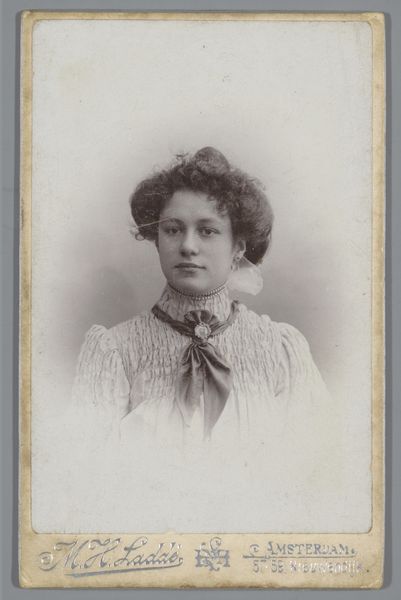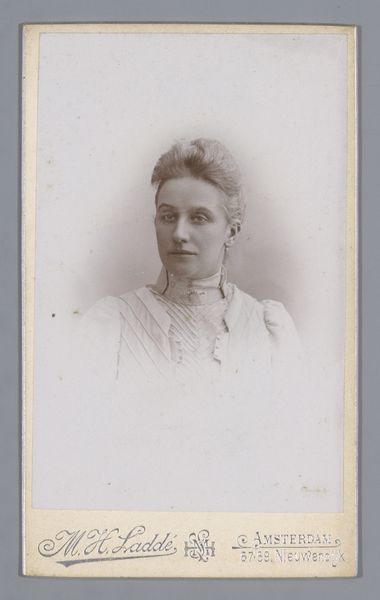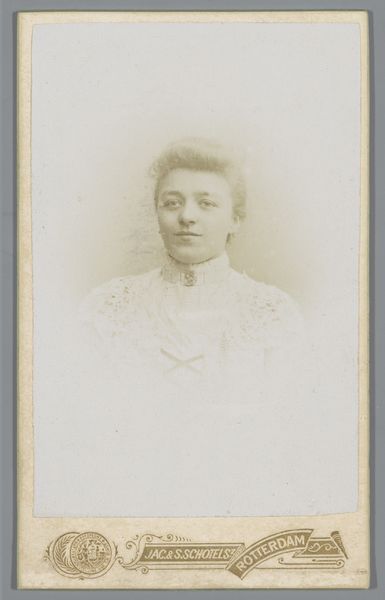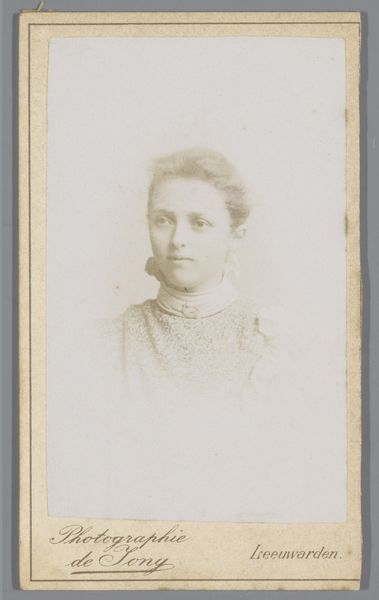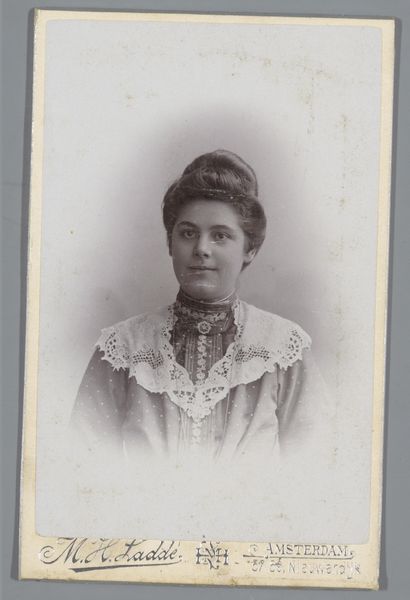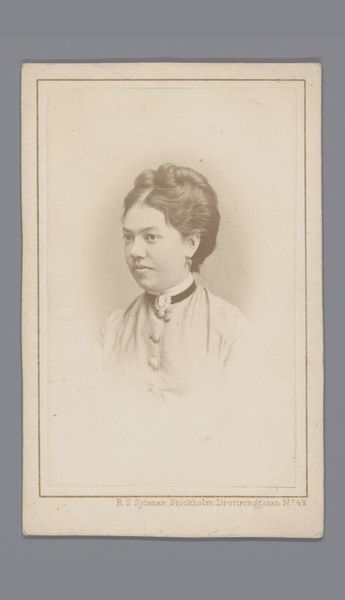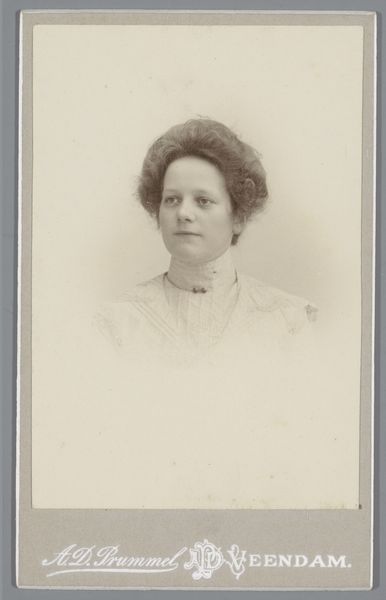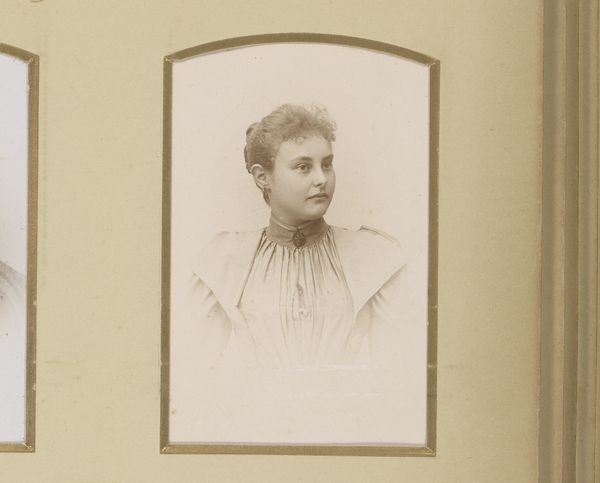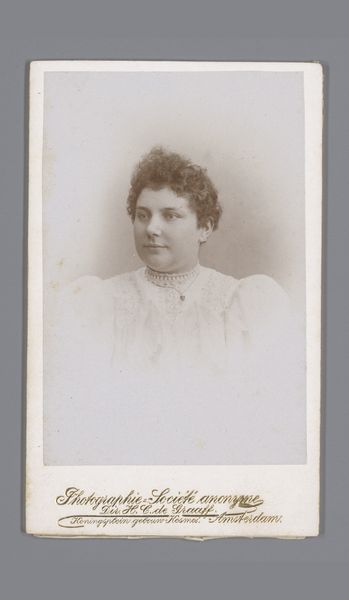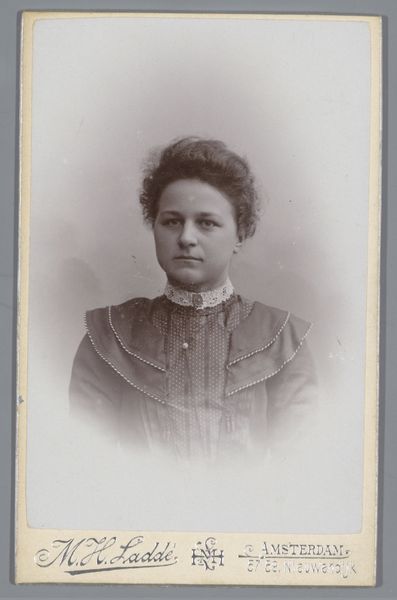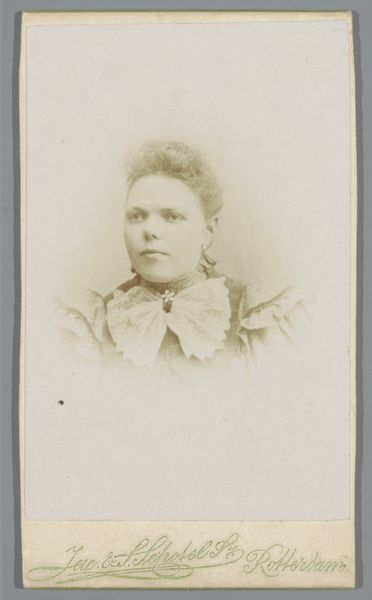
photography
#
portrait
#
photo of handprinted image
#
aged paper
#
toned paper
#
homemade paper
#
pale palette
#
muted colour palette
#
photo restoration
#
light coloured
#
white palette
#
photography
#
realism
Dimensions: height 103 mm, width 64 mm
Copyright: Rijks Museum: Open Domain
Curator: This is "Portret van een onbekende vrouw," or Portrait of an Unknown Woman, by Machiel Hendricus Laddé, dating from 1892 to 1906. Editor: There's something so tender and faded about this photograph. Like a whisper from another era. Curator: Laddé operated from Nieuwendijk 57bis in Amsterdam. This image exemplifies his practice of hand-printed photography on toned paper, a technique emphasizing craft and individual artistry in mass-produced portraiture. Note the slightly aged appearance— likely intentional, highlighting the materiality of the paper itself. Editor: That pale palette really works, almost bleaching the subject, forcing us to look closer. The soft textures, too, it feels almost ethereal, distant... romantic even. Curator: Yes, the tones speak volumes about the experimental photographic processes prevalent at the time. It's interesting to consider the socio-economic context: Photography was becoming more accessible, but studios still offered unique treatments. Editor: I'm fascinated by that tension between accessibility and artifice, and how Laddé’s approach sits perfectly in the middle. There's an intimacy here, a kind of vulnerability in the woman's gaze, amplified by the muted colours. Did he try to tell something more about this lady and period than a mere record? Curator: It's speculation without a documented identity, but examining the material choices offers another kind of narrative, about photographic practice in the Netherlands at the turn of the century, about the democratization and subsequent individualisation of art making. Editor: Agreed! The layers of time and intention almost obscure the actual image, which transforms the photo into a beautiful, melancholic… palimpsest of the self. Curator: Exactly. Seeing it through both the lens of material history and your emotive response offers complementary avenues for engagement, each deepening our appreciation for Laddé’s work. Editor: Leaving us with a rich composite image. A memory, a medium, a message.
Comments
No comments
Be the first to comment and join the conversation on the ultimate creative platform.
